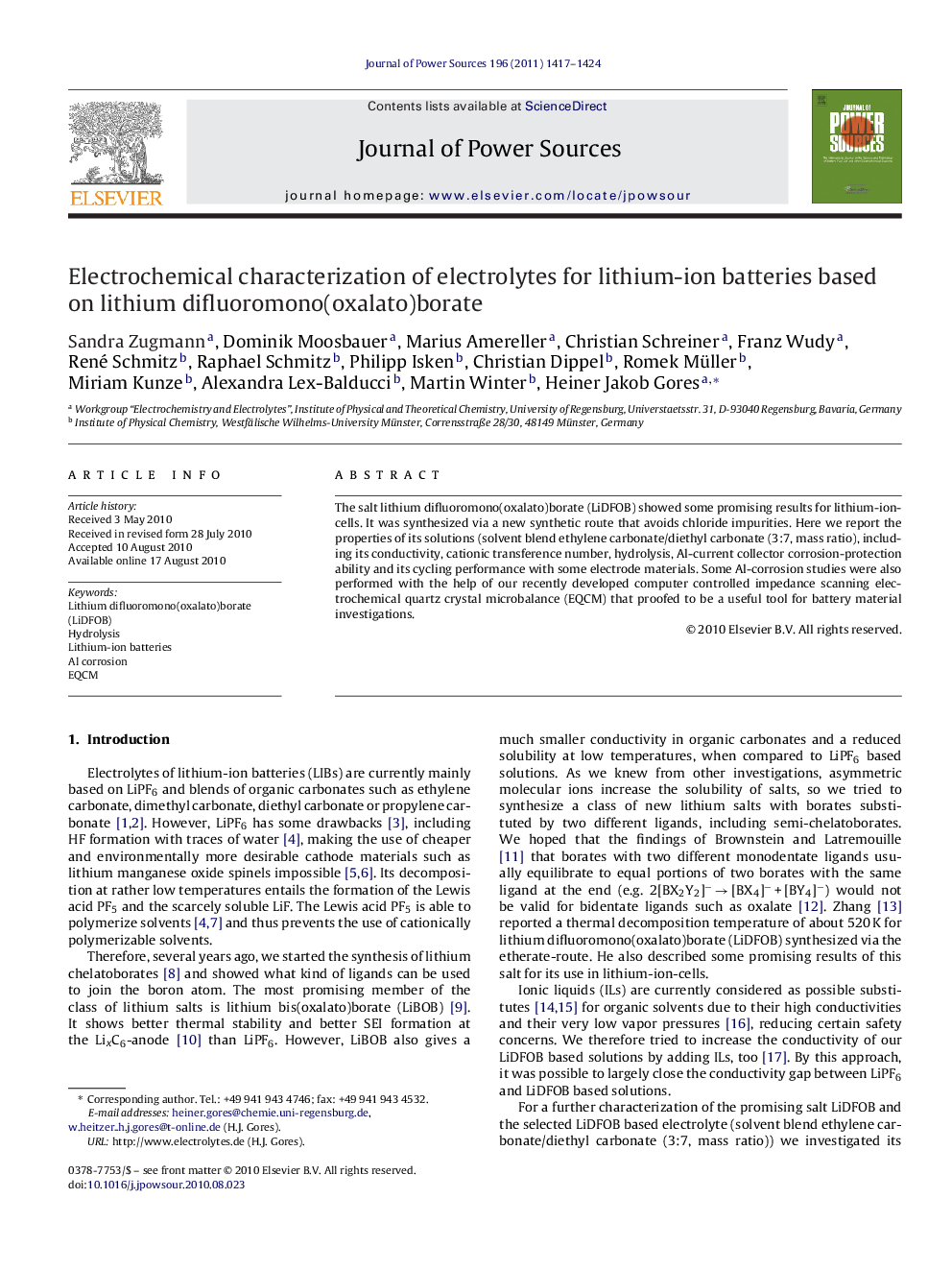| Article ID | Journal | Published Year | Pages | File Type |
|---|---|---|---|---|
| 1289641 | Journal of Power Sources | 2011 | 8 Pages |
Abstract
The salt lithium difluoromono(oxalato)borate (LiDFOB) showed some promising results for lithium-ion-cells. It was synthesized via a new synthetic route that avoids chloride impurities. Here we report the properties of its solutions (solvent blend ethylene carbonate/diethyl carbonate (3:7, mass ratio), including its conductivity, cationic transference number, hydrolysis, Al-current collector corrosion-protection ability and its cycling performance with some electrode materials. Some Al-corrosion studies were also performed with the help of our recently developed computer controlled impedance scanning electrochemical quartz crystal microbalance (EQCM) that proofed to be a useful tool for battery material investigations.
Related Topics
Physical Sciences and Engineering
Chemistry
Electrochemistry
Authors
Sandra Zugmann, Dominik Moosbauer, Marius Amereller, Christian Schreiner, Franz Wudy, René Schmitz, Raphael Schmitz, Philipp Isken, Christian Dippel, Romek Müller, Miriam Kunze, Alexandra Lex-Balducci, Martin Winter, Heiner Jakob Gores,
